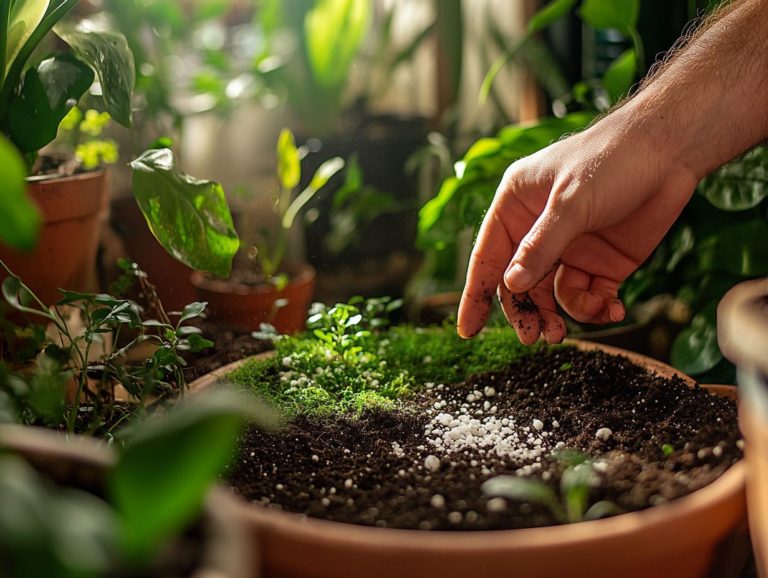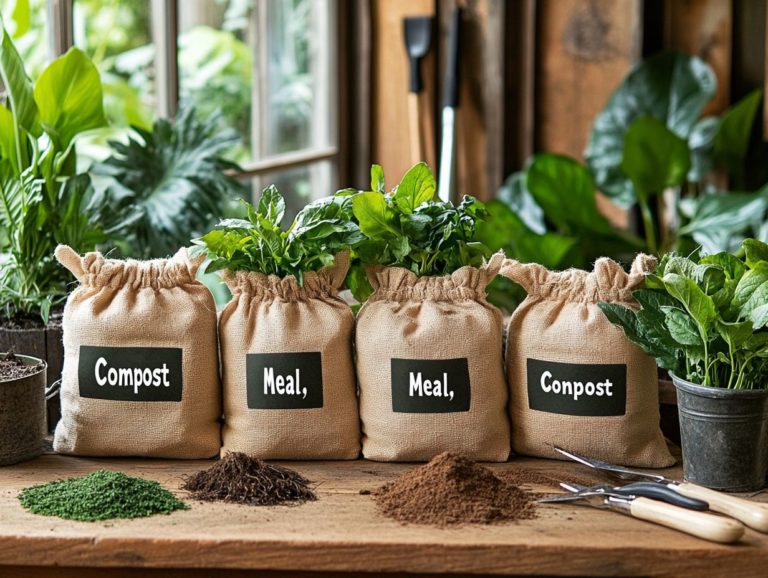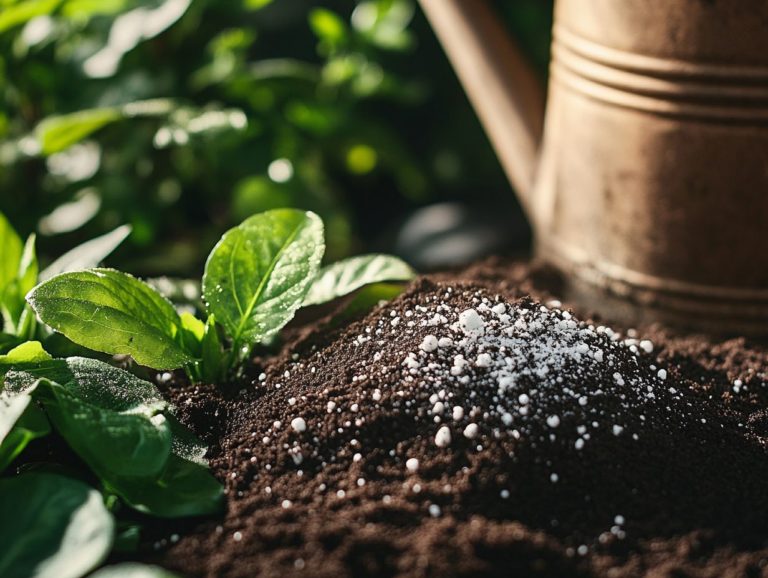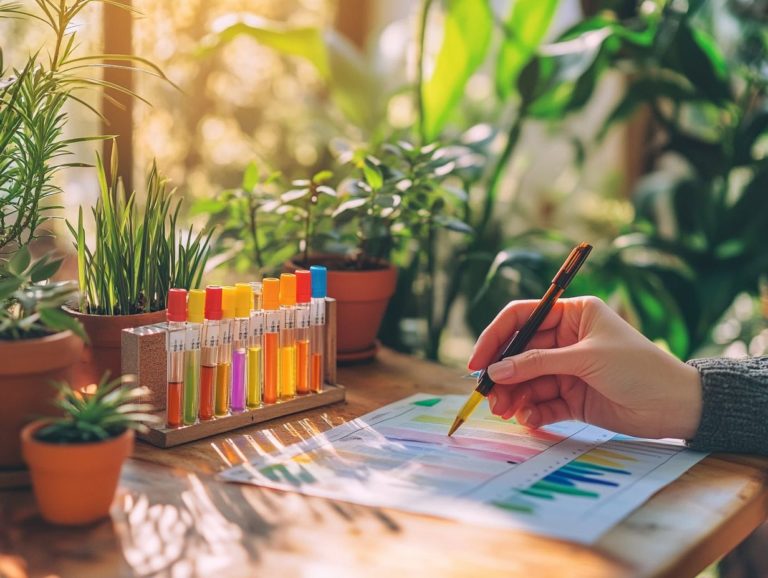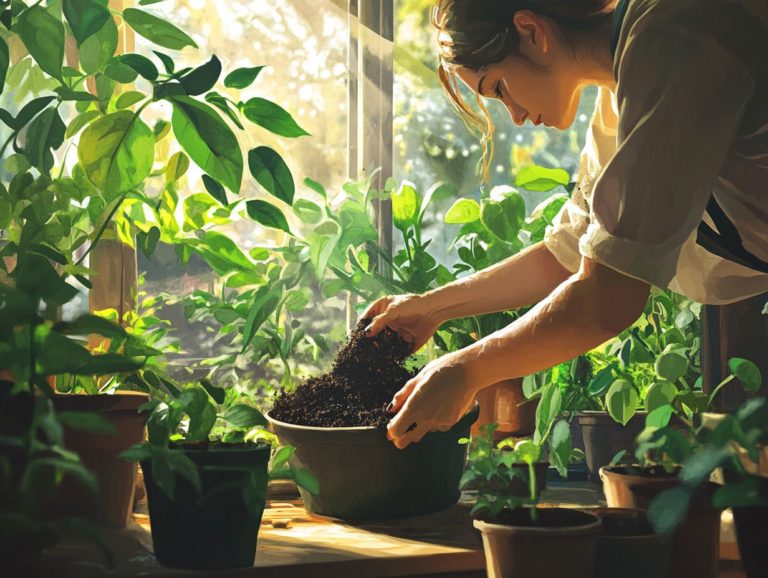5 Signs Your Indoor Plant Soil Needs Change
Indoor gardening, or indoor plant care, is a fulfilling endeavor. However, maintaining the health of your plants is crucial for ensuring vibrant foliage, which demands a keen eye, especially when it comes to their soil, including proper maintenance and drainage.
There are times when the state of your plant’s soil will clearly indicate that a change is in order.
This article delves into five key signs that suggest your indoor plant soil needs your attention. You should also check how often to refresh the soil, the best types for your plants, and tips for creating a thriving environment, including proper pruning and maintaining suitable pot sizes for your plants.
Immerse yourself in this information to ensure your green companions thrive!
Contents
- Key Takeaways:
- 1. The Soil Is Dry and Crumbly
- 2. The Soil Has a Foul Odor
- 3. The Plant Is Not Growing or Is Wilting
- 4. There Are Fungus Gnats or Other Pests in the Soil
- 5. The Soil Is Compacted and Hard
- How Often Should Indoor Plant Soil Be Changed?
- Frequently Asked Questions
- What are the signs that my indoor plant soil needs to be changed?
- How often should I change my indoor plant soil?
- Can I reuse the same soil when changing my indoor plant’s pot?
- How do I know if my indoor plant’s soil is lacking nutrients?
- Can I change my indoor plant’s soil during the winter?
- What are some tips for changing my indoor plant’s soil?
Key Takeaways:
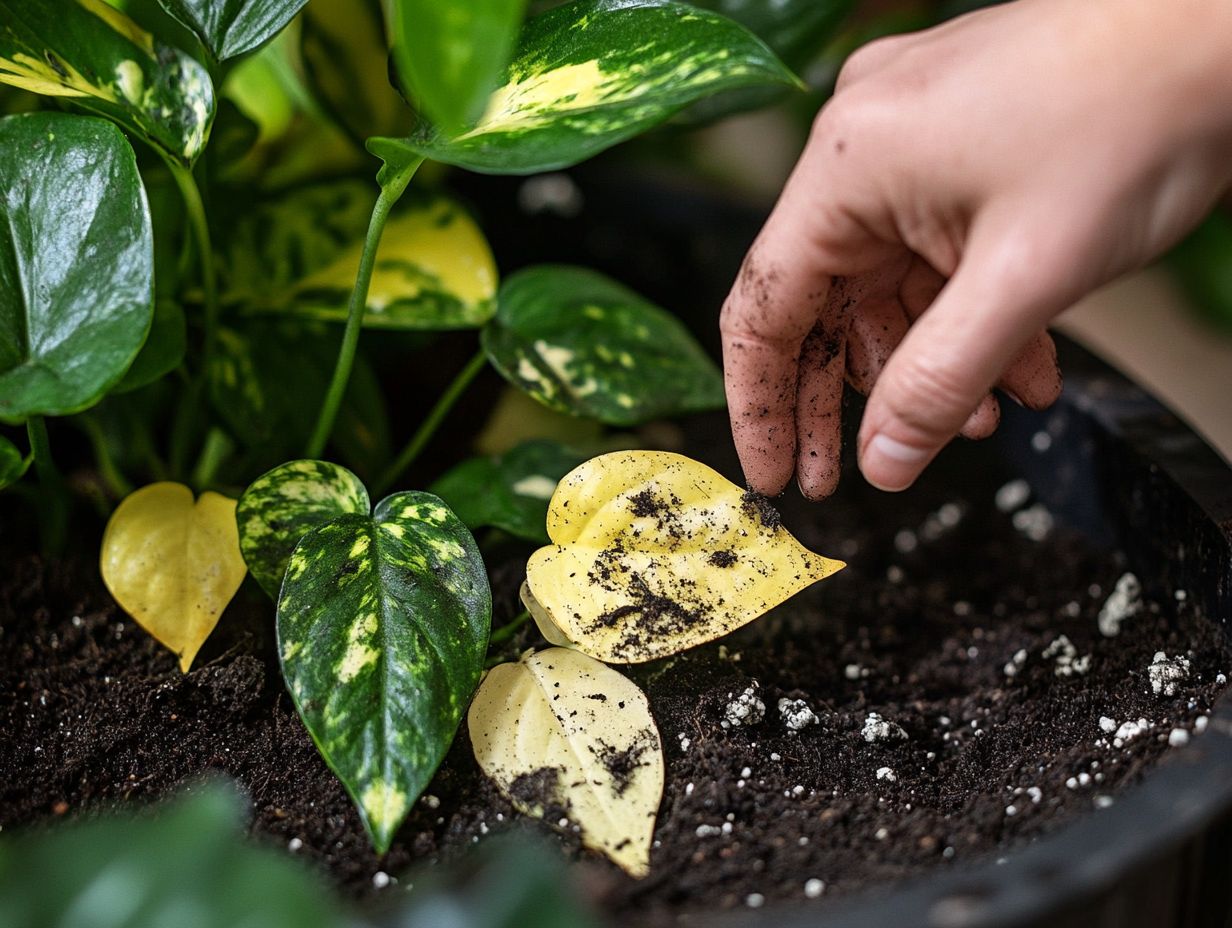
- Dry, crumbly soil = Lack of moisture. Your plant is stressed!
- Bad smells? That may mean root rot or harmful bacteria.
- Wilting or slow growth? Your plant may need more nutrients or a bigger pot!
1. The Soil Is Dry and Crumbly
When the soil of your houseplants feels dry and crumbly, it often signals a lack of moisture retention. This can lead to significant issues in plant health and growth particularly for container-grown varieties like the Emerald Palm or those charming succulents that thrive in well-maintained soil.
Moisture is paramount to soil health, as it directly influences the ability of plant roots to absorb essential nutrients. Prolonged dryness can hinder root development, leaving your plants looking stressed with symptoms like yellowing leaves or wilting.
Recognizing these signs early on is essential for effective rescue efforts. To rehydrate the soil efficiently, consider techniques such as deep watering, using moisture-retentive mulches, or incorporating organic matter to enhance water retention and ensure the roots can access nutrients and promote healthy growth.
Make sure your potting mix balances drainage and nutrient retention to keep your plants thriving.
2. The Soil Has a Foul Odor
A foul odor wafting from your soil is a significant red flag, often indicating root rot or the presence of bacteria that thrive without oxygen, both of which can jeopardize the health of your cherished houseplants.
These unpleasant smells frequently suggest that the soil is overly compacted or retains too much moisture, resulting in inadequate water drainage and creating an environment that s far from ideal for healthy root development. When roots are starved of oxygen, it stunts their growth and makes your plants more vulnerable to disease.
Prevent these conditions by watering properly, letting the soil dry out between waterings. Consider incorporating organic soil amendments that enhance aeration and drainage. By regularly assessing soil health and adjusting your care practices, you can significantly boost root vitality and encourage vibrant foliage.
3. The Plant Is Not Growing or Is Wilting
If your plant is starting to wilt or shows stunted growth, it could be facing several issues, such as inadequate nutrients, an ill-fitting pot size, or roots that are crowded in their pot. This situation demands your immediate attention for optimal care.
Assessing nutrient availability is crucial, as deficiencies can severely impede growth and overall vitality. Be mindful of your watering techniques; both overwatering and underwatering can lead to root rot or dehydration, exacerbating the problem.
Selecting a pot that allows ample space for roots to expand and provides proper drainage is essential for the healthy development of plants in their containers. Look out for signs of distress like yellowing leaves or drooping stems these often signal that it s time for repotting.
Check your plant s soil regularly to foster healthy growth. Adjust watering and nutrients as needed to help your plants flourish!
4. There Are Fungus Gnats or Other Pests in the Soil
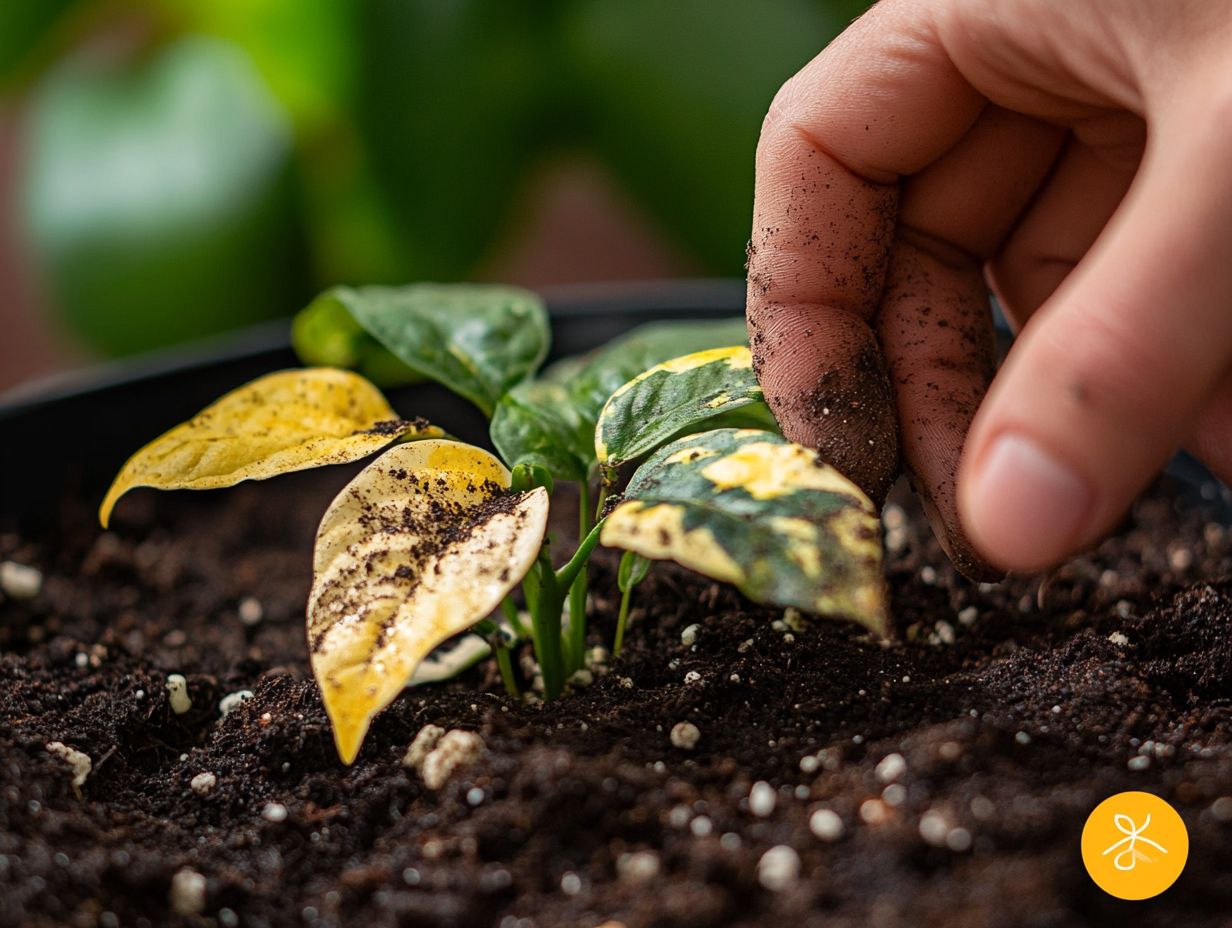
The presence of fungus gnats or other pests in your soil disrupts your plant’s health. This often signals potential overwatering or inadequate drainage, which can worsen root problems and hinder healthy growth.
To effectively manage these issues, you must identify the underlying causes before resorting to organic pesticides. Implementing cultural practices can significantly help prevent infestations. For instance, adjust your watering habits by allowing the top layer of soil to dry out before re-watering. This discourages pests since their larvae thrive in moist conditions.
Ensuring proper soil aeration fosters healthier roots, increasing your plant’s natural resilience against pests. You might also consider using beneficial nematodes, which are tiny worms that help control pests, or introducing predatory insects, which eat harmful pests, keeping your plants safe.
5. The Soil Is Compacted and Hard
Compacted and hard soil can hinder root growth and water drainage. This makes it hard for your plants to grow and ultimately compromises their health.
When root systems cannot properly penetrate the soil, they struggle to access essential nutrients and water. This can stunt growth and lead to yellowing leaves or wilting, especially if the roots are compacted in the pot. Compacted soil acts as a barrier, preventing roots from spreading and absorbing vital resources, resulting in diminished vitality for your plants.
To address this issue, employ repotting techniques by transferring your plants to a fresh, well-aerated mix. Incorporating organic amendments like compost can greatly improve soil structure, help water drain better, and enhance nutrient availability.
Regularly adding mulch on top of the soil creates a better environment, helping retain moisture while gradually reducing compaction over time.
How Often Should Indoor Plant Soil Be Changed?
Changing your indoor plant soil is key! It boosts growth and keeps your plants thriving. How often you should do this depends on the types of plants you’re cultivating, their growth rates, and the potting mix you’re using.
Different plant species have unique needs. For example, cacti and succulents don’t need soil changes as often because they grow slowly and retain less moisture. In contrast, tropical houseplants may thrive on a more regular schedule, often needing soil replacements every six months. Additionally, it’s important to recognize 5 signs your indoor plants need watering to ensure they stay healthy.
Watch for yellowing leaves they’re a clear sign it’s time for a soil change! Fresh potting mix not only reintroduces essential nutrients but also improves aeration, promoting better root development and moisture control.
By understanding the specific requirements of each plant type, you’ll be well on your way to creating a lush, thriving indoor garden.
What Are the Best Types of Soil for Indoor Plants?
Selecting the right soil for your indoor plants means understanding their specific needs. Different potting mixes offer varying levels of nutrients, drainage, and moisture retention, which are crucial for ensuring healthy growth.
This knowledge is especially important when exploring options like organic potting mixes, which are free from synthetic fertilizers perfect for those who prefer a more natural touch. For example, the Emerald Palm flourishes in a well-draining mix enriched with peat and compost, while succulents thrive in a gritty blend that prevents excess moisture.
It’s vital to find the right balance of nutrients and moisture, as inadequate conditions can stunt growth or lead to root rot. By grasping these nuances, you can make informed choices that support the optimal health and vibrant growth of each unique plant species in your care.
What Are the Steps to Change Indoor Plant Soil?
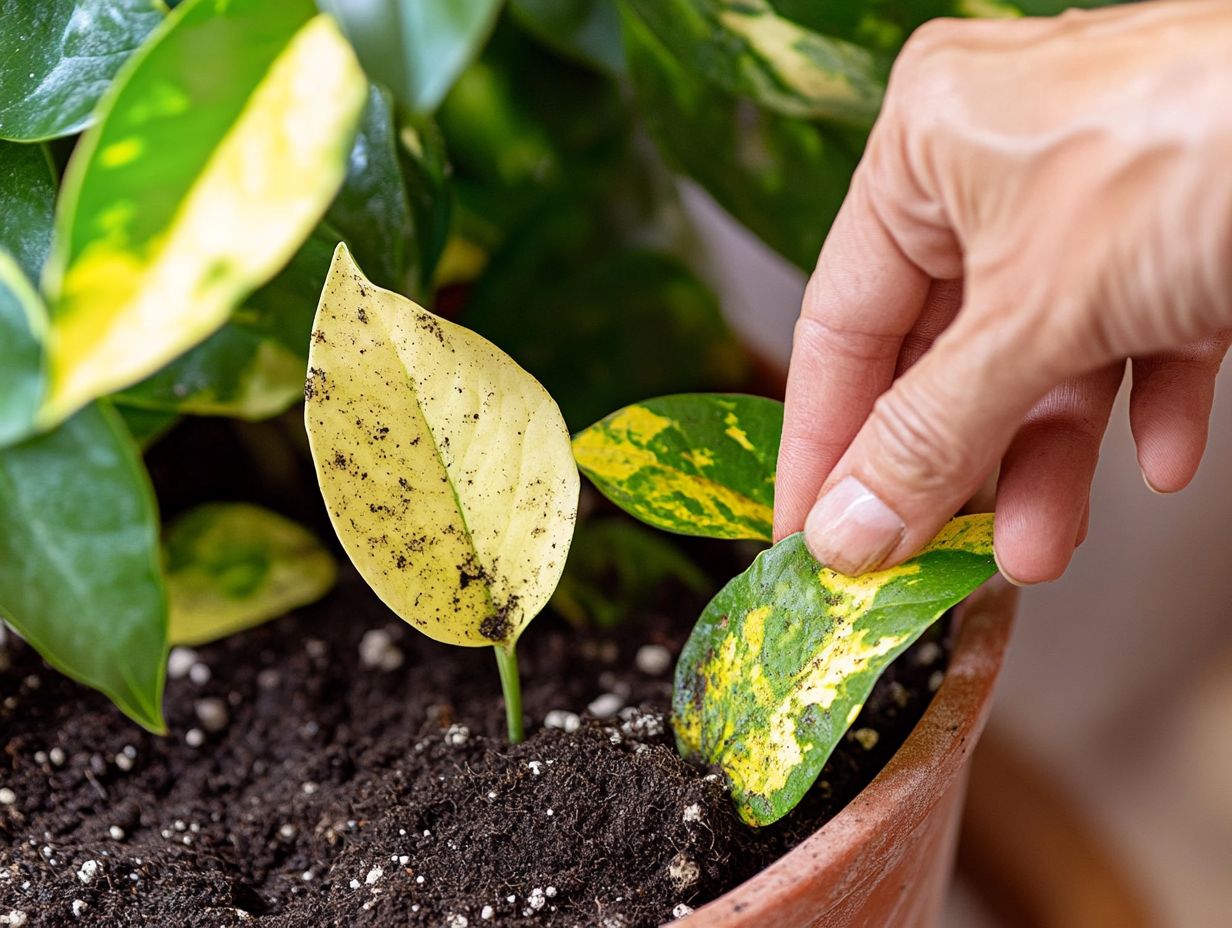
Changing the soil of your indoor plants requires a thoughtful approach that minimizes stress on the plant while effectively addressing the condition of both the roots and the soil. This not only promotes healthy growth but also aids in long-term maintenance.
Begin by assessing the overall health of your plant. This initial evaluation can reveal whether the soil has become compacted or depleted of essential nutrients.
Once you’ve completed this assessment, gently remove the plant from its current container to inspect its root system.
During this stage, take care to tease the roots apart, encouraging new growth and checking for any signs of root rot. If you discover any damaged roots, trim them back to allow the plant to flourish in its new environment.
Next, it s vital to prepare fresh, nutrient-rich soil that drains well to prevent future complications such as root circling or thick roots. When repotting, apply techniques with precision. Ensure the plant is positioned at the correct depth and that the soil is firmly packed around it.
This will eliminate air pockets and create an optimal environment for new growth.
What Are Some Tips for Maintaining Healthy Indoor Plant Soil?
Maintaining healthy indoor plant soil is essential for ensuring the vitality and longevity of your plants. This involves a thoughtful blend of proper watering, managing nutrients, and regular checks for pests and soil conditions.
To achieve optimal results, adopt a watering routine that mimics natural rain patterns. Allow the top layer of soil to dry out before adding more water.
Understanding the specific drainage needs of each plant is equally important, as it helps prevent root rot and ensures that excess moisture doesn t accumulate. Selecting the right potting mix tailored to each plant type can significantly enhance moisture retention and aeration.
Regular soil testing enables you to identify nutrient deficiencies. This practice helps you adjust your fertilization regimen.
This attention to detail ensures your green companions thrive according to their unique requirements.
What Are the Benefits of Using Organic Soil for Indoor Plants?
Using organic soil for your indoor plants offers amazing benefits, including improved nutrient availability, enhanced soil structure, and a more supportive environment for root growth. These factors work together to promote robust plant health and growth.
These organic mixes are enriched with natural ingredients like compost and worm castings. Not only do they provide essential nutrients, but they also foster healthy microorganisms in the soil.
This diversity of microorganisms helps create a balanced ecosystem that bolsters plant resilience against pests and diseases.
Using organic practices contributes to environmental sustainability by minimizing reliance on synthetic fertilizers and harmful chemicals. These can leach into water sources and threaten vital ecosystems.
By opting for organic soil, you align your gardening practices with a more eco-friendly approach, nurturing a healthier planet while cultivating flourishing indoor greenery. Switch to organic soil today and watch your plants thrive!
Can Indoor Plant Soil Be Reused or Recycled?
Reusing or recycling indoor plant soil is not just sustainable; it s a smart way to save resources and cut down on waste. Evaluate it carefully to ensure it still provides the nutrients necessary for thriving plants!
Before you decide to reuse soil, take a moment to inspect it for any signs of pests or diseases that could jeopardize your new plants. Assessing nutrient density is crucial, as old soil may have exhausted its nutrient supply over time.
To breathe new life into aged soil, consider incorporating organic matter like compost or worm castings. These can boost nutrient levels and improve soil structure.
Mixing in perlite or vermiculite can further enhance aeration and drainage. Adopting best practices means conducting a soil test to measure pH levels and nutrient content.
This ensures that the reused soil remains a fertile foundation for thriving plant health.
Frequently Asked Questions
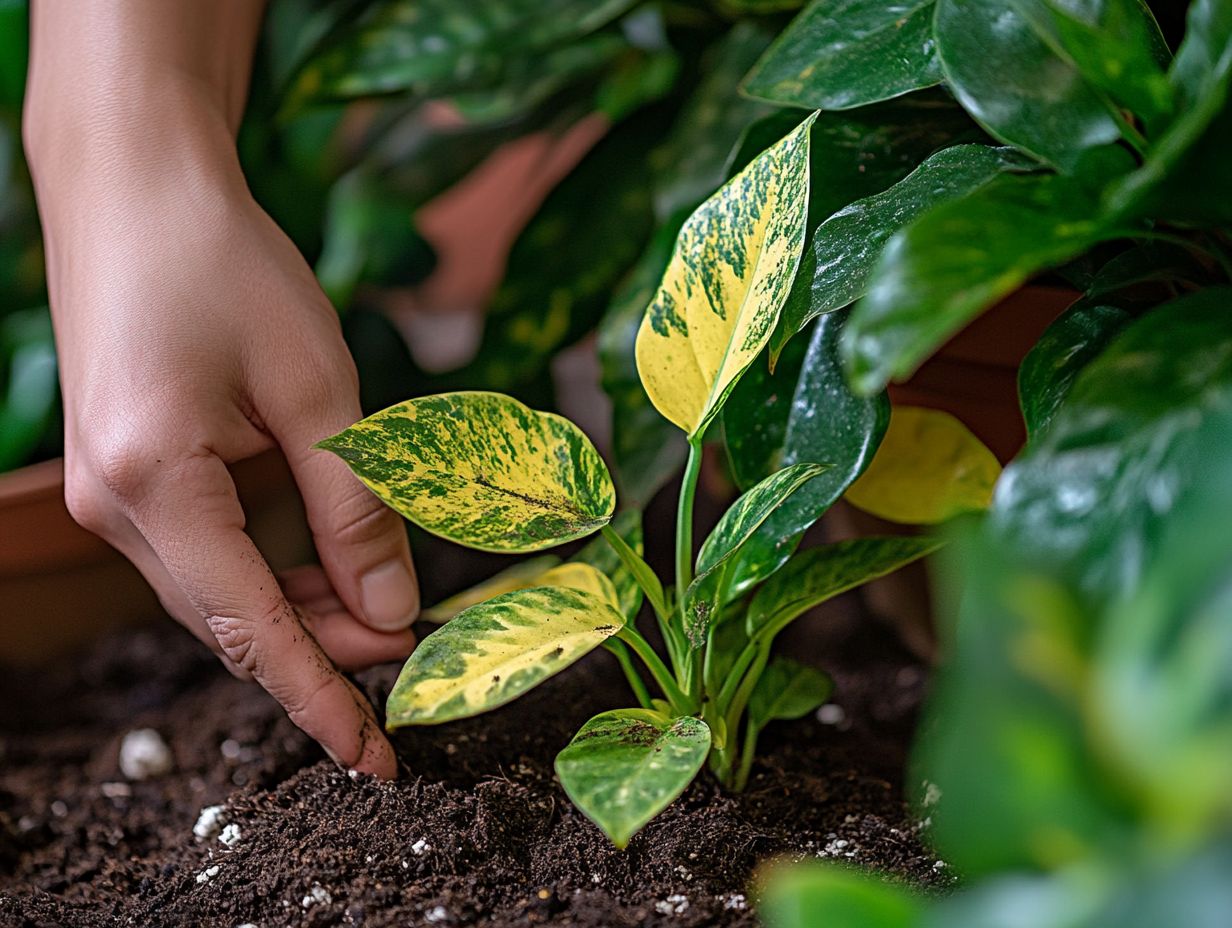
What are the signs that my indoor plant soil needs to be changed?
The first sign is compacted soil that doesn’t drain well. Other signs include wilting or yellowing leaves, fungal growth on the soil surface, a foul odor, and poor plant health despite proper care.
How often should I change my indoor plant soil?
It depends on the type of plant and its needs. Some plants may need a soil change every 6-12 months, while others can go 2-3 years. Keep an eye out for the signs mentioned above.
Can I reuse the same soil when changing my indoor plant’s pot?
Yes, you can reuse soil if it s in good condition. Just remove any debris or dead material and mix in fresh soil or nutrients before reusing it.
How do I know if my indoor plant’s soil is lacking nutrients?
If your plant s leaves have turned pale or yellow, it might be lacking nutrients. You can test the soil s acidity or alkalinity using a home testing kit to ensure it s suitable for your plant.
Can I change my indoor plant’s soil during the winter?
Changing your plant’s soil in winter isn’t the best idea! Your plant is resting, so wait for spring when it s ready to thrive.
What are some tips for changing my indoor plant’s soil?
Choose a pot that fits your plant and has drainage holes. Gently remove the plant, loosen any compacted roots, and trim any damaged ones. Use fresh, well-draining soil, and water thoroughly. Adjust your watering and fertilizing routine gradually.


